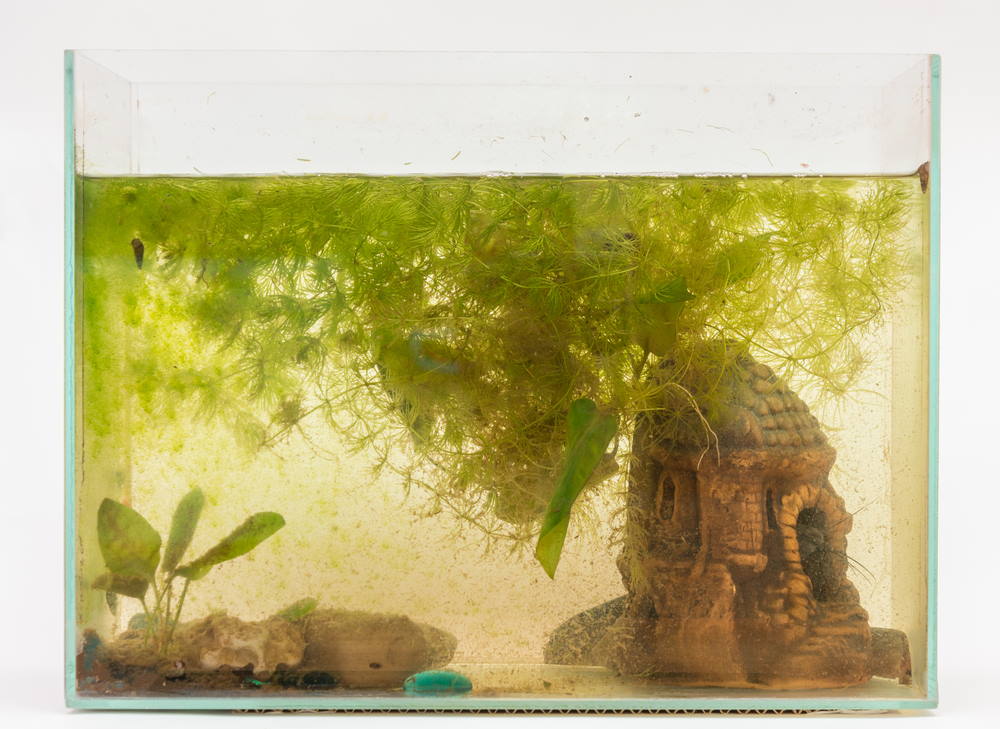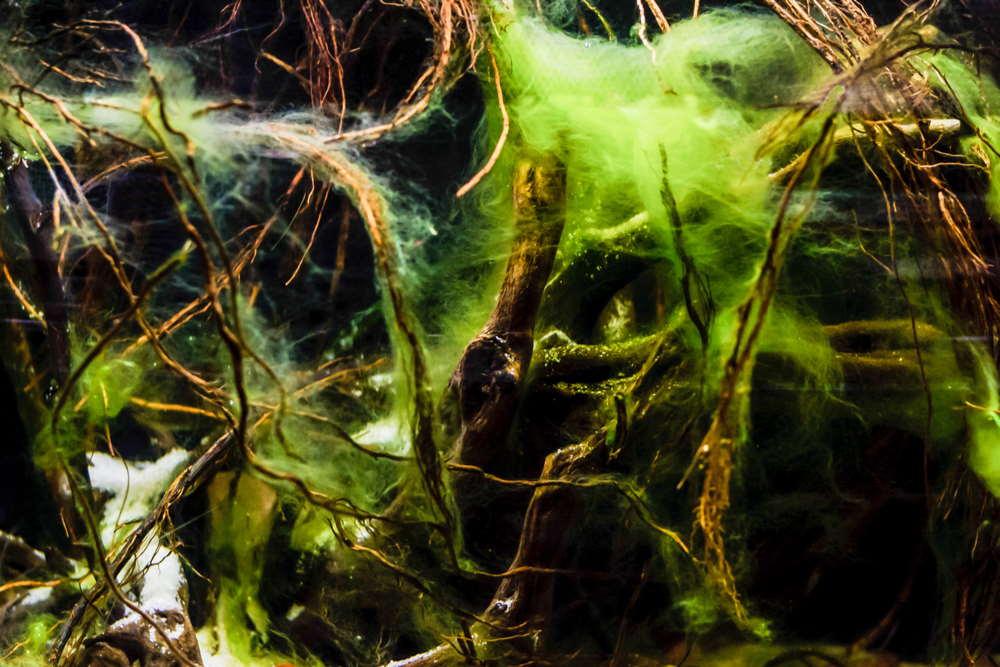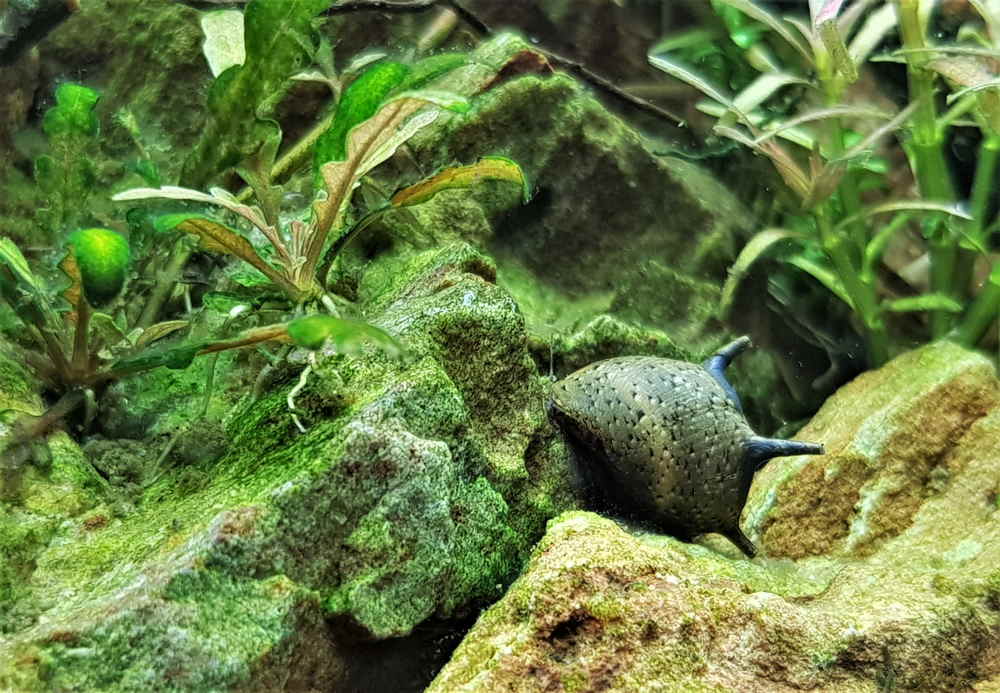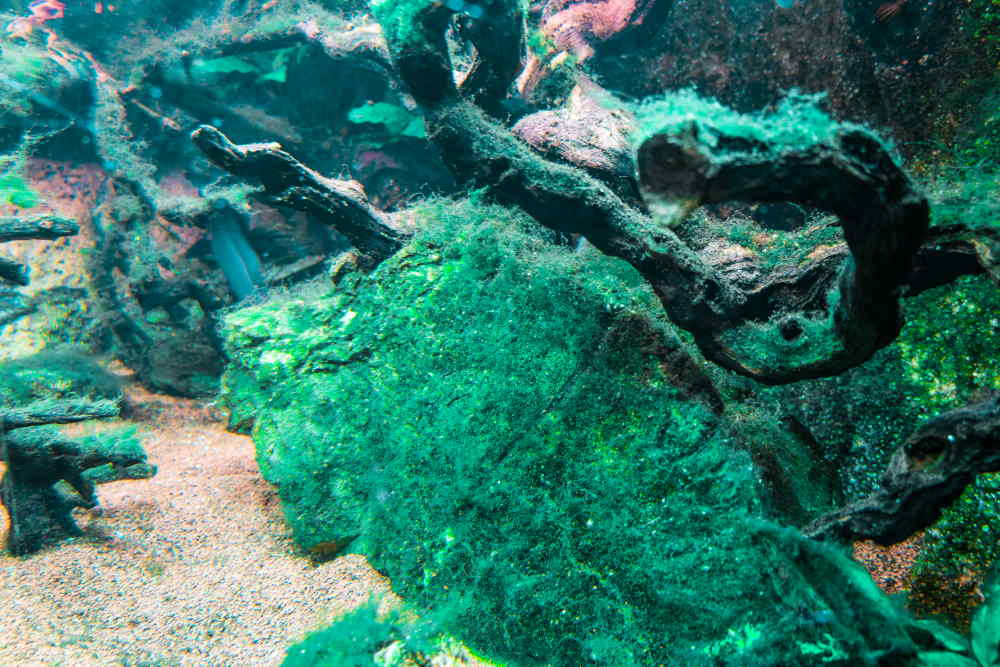How To Clean Algae Bloom From Fish Tank
Do y'all dream of having a beautiful aquarium only end up constantly fighting to keep algae at bay? It's a familiar struggle that many of the states accept been through, then in this article, let's go a better understanding of the root causes of algae, the most common types found in freshwater aquariums, and how to gain the upper mitt.
Is Algae Bad for a Fish Tank?
Contrary to pop conventionalities, algae are not evil. Similar plants, they use photosynthesis to catechumen light and organic nutrients in the water (such as fish waste) into new algae growth. That means they besides produce oxygen during the daytime and eat information technology at night. Unlike plants, algae are a less complex lifeform and therefore tin can survive in "worse" weather than plants, meaning they can absorb more wavelengths of light and consume dissimilar compounds that plants tin't use.
Algae is actually a good affair for your aquarium's ecosystem because many fish and invertebrates like to eat it and it helps make clean the water as a course of filtration. Plus, certain algae tin can look attractive and brand an aquarium seem more than natural. However, nearly people don't like their appearance, especially in planted tanks, since it blocks the scenery and viewing area in a fish tank.
The reality is that in that location is no such thing as a perfect planted aquarium that is 100% costless of algae. Imagine you lot have a neighbor with a well-groomed lawn of grass. Even they will get the occasional weed (like algae in an aquascape) that must be dealt with. Now let's suppose your not-as-nice backyard has 5 dandelion weeds that have grown to one foot alpine. If you lot mow the lawn, then it will appear as if yous have no weeds. In the same way, we want to learn how to appropriately control algae so that yous tin can't run across it and the tank looks like practically spotless.
Why Does My Fish Tank Have And so Much Algae?
Algae is caused by an imbalance of nutrients and lighting in your aquarium. This simple statement can be a niggling hard to unpack, but basically, your plants need simply the right amount of lighting and nutrients for optimal growth. If yous give them also much light and non enough nutrients as edifice blocks to grow, the algae will accept advantage of the excess light and multiply. If you provide a lot of nutrients merely not enough light (which regulates how fast plants can utilize the nutrients), then algae will take advantage of the actress nutrients. To make matters worse, achieving a perfectly balanced tank is nigh impossible because even if yous balance everything today, your plants volition continuously grow or you will clip them, thus changing the corporeality of nutrients and lighting they need.
How Exercise I Get Rid of Algae in My Fish Tank?
Since you lot will ever have some imbalance between lighting and nutrients, the goal is to get your aquarium as close to being counterbalanced every bit possible, and then utilize an algae-eating crew to fill in the rest of the gap. Nosotros have found this ane-two punch strategy quite effective at profoundly reducing algae to unnoticeable amounts. In the following section, we'll be discussing the six nearly common types of aquarium algae with targeted tactics of dealing with them.
Brown Diatom Algae
Dark-brown (and sometimes green) diatom looks like a dusty, flour-like substance covering your aquarium walls, substrate, and other surfaces. Because information technology's then soft, information technology easily rubs off with an algae scrubber sponge, and many animals (like otocinclus catfish, snails, and shrimp) like to eat it. Diatom algae is most usually seen in newly planted tanks and is oft caused by high levels of phosphates and silicates. It's one of the simplest algae to get rid of because if you just give it some time, the plants will naturally consume the excess phosphates and silicates, and clean-up crews love to feed on it.

Brown algae
Black Beard Algae (BBA)
BBA is one of the most problematic algae that people meet considering non many things eat it. Equally per its name, information technology grows in very thick, bushy clumps that are usually blackness or grey in color (but sometimes reddish or dark-brown). This algae likes to grow on driftwood, aquarium decor, and plants, and if left unchecked, it can completely engulf an aquarium in one to two years. Unfortunately, there's a lot of dissimilar things that can contribute the growth of BBA, and so there's no 1 simple fashion to treat it.

Blackness beard algae
If you don't like the look of the algae, yous can try calculation Siamese algae eaters, Florida flagfish, or amano shrimp (although the shrimp take a long fourth dimension to eat it unless you have an army of them). Some people turn to chemic treatments, such as using liquid carbon to directly spray on the BBA for tough cases or to dose the entire aquarium'southward h2o cavalcade for mild cases. Just be careful because certain plants like vallisneria are sensitive to liquid carbon.
Another chemic treatment is to spray the BBA-infested plant or decor with 3% hydrogen peroxide (purchased from your local drugstore) outside of water, let it sit for 5 minutes, rinse off the chemical, and put the particular back in the aquarium. The dying algae turns red or clear, and animals may eat it in its weakened state. Just call back that there are no quick fixes – BBA can take six to eight months to get established, and so expect it to take at to the lowest degree that long to become rid of.
Hair Algae
In this category, nosotros're referring to the many types of algae that look like wet hair when you take them out of the aquarium (e.g., pilus algae, staghorn algae, string algae, and thread algae). These algae can be problematic because they grow so rapidly or are hard to get rid of. They're generally caused by an backlog of certain nutrients (such as iron), as well much calorie-free, or not plenty nutrients (to match the long lighting period). Therefore, attempt decreasing your lighting period, increasing fertilization, or decreasing iron. Siamese algae eaters, amano shrimp, molly fish, and Florida flagfish are good candidates to use as clean-upwards crew. Y'all can also help them past manually removing big clumps using a toothbrush.

Hair algae
Green Spot Algae (GSA)
GSA looks like tiny, difficult green spots on the aquarium walls and slower growing plants that are very difficult to clean off. A lot of things can cause an outbreak, such as too much light or an imbalance of phosphate. Try using a glass-safe or acrylic-safe algae scraper (with the blade attachment) to remove the algae from aquarium walls.
Nerite snails are likewise a good first line of defense since they seem to like eating GSA. Just be aware that, while this species does not reproduce in freshwater aquariums, they volition lay white eggs (similar to trivial sesame seeds) all over the aquarium, and some people don't similar the wait.

Nerite snail eating dark-green spot algae
Blueish-Light-green Algae (BGA)
BGA is technically not a blazon of algae, but rather a blue-green alga that grows similar a slimy blanket coating the substrate, plants, and decor. It comes with a rather distinctive smell that many fish keepers larn to recognize before the bacterial colony is even visible. No one is 100% sure what causes BGA, but in general, improved aquarium upkeep and increased water circulation with an air stone or powerhead can assist keep it abroad. Algae eaters typically will not eat the stuff, so don't count on their help in this case.

Blue-green algae or cyanobacteria
Since BGA is photosynthetic, you can try to blackout the tank for a week, but this can be hard on the plants. Instead, we recommend manually removing equally much of the BGA as possible, doing a water change while vacuuming the substrate, and then treating the tank with antibiotics. Use one packet of Maracyn (which is made of an antibiotic called erythromycin) per 10 gallons of water, and let the aquarium sit down for one week before doing another water change. Repeat the treatment one more time for stubborn cases. For more information on treating BGA, read our full commodity here.
Green Water
If your aquarium water looks like pea soup, you lot probably take light-green water, which is acquired by a proliferation of free-floating, unmarried-celled phytoplankton. Unfortunately, they replicate and so quickly that you cannot affluent them out with large water changes. Green water tin come up from besides much lighting (especially if the tank gets direct sunlight former during the solar day), an excess of nutrients (such as accidentally double-dosing fertilizers), or an ammonia spike (such as from a new tank that has not been cycled yet or overfeeding by a pet sitter). To get rid of green water, you can blackout the tank for at least a week, which is difficult on your plants. Some other option is to purchase a UV sterilizer, which will impale off the algae within two to three days.

Green water
How to Rest Lighting and Nutrients
When it comes to fighting algae, everyone always assumes you lot must decrease lighting and/or nutrients, but sometimes the improve form of activeness is to increase one or both of them. Let's go dorsum to our example where yous have a green backyard with v dandelions. Information technology doesn't brand sense to stop watering your lawn (eastward.g., stop using lighting and fertilizers) just to get rid of a few weeds because y'all'll probably end up killing your grass besides. Instead, nosotros bargain with the weeds by pulling them out (e.yard., manually removing the algae or getting a snail to eat them) and/or feeding the lawn more and then that it's healthier and the weeds won't come back as readily.
Your focus should exist on successfully growing lots of plants, not necessarily on eliminating algae at all costs. To balance the aquarium, put your calorie-free on an outlet timer as a constant factor, and then gradually increase or decrease your food levels with an all-in-1 fertilizer. Do not make multiple or drastic changes all at once because it takes at least 2 to three weeks to see whatever divergence in your plants and determine whether or not your deportment helped residue the aquarium. (For more detailed troubleshooting steps, run across our establish nutrient deficiency article to learn which specific nutrients your plants might be missing.)
The Net claims that if you practice everything perfectly, your tank will never get algae, only in our experience, this is highly unlikely in the existent world. Fifty-fifty Takashi Amano, known as the male parent of modernistic aquascaping, popularized the usage of the algae-eating amano shrimp to keep his planted tanks make clean and beautiful. So, don't be afraid to bring in the right algae eaters to help out while yous're trying to fix your lighting and food residuum problems. Best of luck on your establish-keeping journey!
Source: https://www.aquariumcoop.com/blogs/aquarium/aquarium-algae
Posted by: arguetamonatur.blogspot.com


0 Response to "How To Clean Algae Bloom From Fish Tank"
Post a Comment